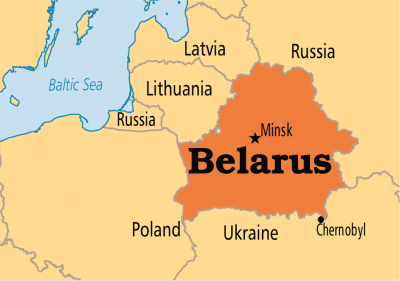Turmoil in Belarus, Another US Color Revolution Attempt?

Time and again, the CIA, National Endowment for Democracy (NED), International Republican Institute (IRI), National Democratic Institute (NDI), and USAID have been involved in US schemes to replace independent governments with pro-Western puppet ones.
Tactics include violent and non-violent labor strikes, mass street protests, major media propaganda, and whatever else it takes to achieve Washington’s aims — at times succeeding, other times failing.
In late 2013, early 2014, the Obama regime successfully replaced Ukraine’s democratically elected Viktor Yanukovych with pro-Western putschist rule — a fascist dictatorship in Europe’s heartland, targeting Russia.
For months in Hong Kong last year and sporadically in 2020, Trump regime orchestrated violence, vandalism and chaos failed to achieve its aims that were all about weakening China by attacking its soft underbelly.
Tactics employed by the US in Ukraine, Hong Kong, and elsewhere were first used against Serbia’s Slobodan Milosevic in 2000.
What appeared to be a spontaneous political uprising was developed by RAND Corporation strategists in the 1990s — the concept of swarming.
It replicates “communication patterns and movement of” bees and other insects used against nations to destabilize and topple their governments.
The CIA and other anti-democratic US organizations are involved.
Their mission is all about achieving what the Pentagon calls “full spectrum dominance,” seeking control over planet earth, its resources, populations, and outer space.
Swarming and related actions are war by other means, including by use of information and communications technologies, along with social media.
Cyberwar today is what blitzkrieg was to 20th century warfare.
Swarming is a way to strike from all directions in an overwhelming fashion similar to an all-out military attack.
Is this what’s been going on in Belarus for months, especially since the August 9 presidential election.
Longtime incumbent Alexander Lukashenko claimed victory by more an 80% majority over key opposition figure Sviatlana Tsikhanouskaya.
Now in Lithuania, she cried foul, claiming she won. He lost.
Disruptive actions against Lukashenko have been ongoing since last spring, dubbed a “slipper revolution” by Belarusian Belsat TV in May.
Like Ukraine, Belarus borders Russia, why Washington aims to transform it into a client state.
On Saturday, Lukashenko said he’s being target by a “color revolution” attempt to remove him from power he’s had as president since 1994.
Reportedly he said “(w)e have read the guidelines on how to conduct color revolutions,” adding that’s what happening in Belarus suggests that Russia is next if not effectively countered.
Late Saturday, he and Putin spoke by phone, a Kremlin readout saying:
Lukashenko initiated the call. He “informed Vladimir Putin about the developments following the presidential election in Belarus.”
“Both sides expressed confidence that all existing problems will be settled soon.”
“The main thing is to prevent destructive forces from using these problems to cause damage to mutually beneficial relations of the two countries within the Union State.”
In 1995, both countries agreed on this arrangement that lets their citizens work and/or live in either nation at their discretion — while retaining their passports and national identity.
A bilateral 1999 treaty calls for economic integration and mutual cooperation to defend both nations from foreign threats — with the intent of integrating Belarus with Russia.
So far, it hasn’t happened because Lukashenko’s power would be subordinated to Moscow.
Is now the time to accept where he hasn’t gone before because of concern about a fate similar to Ukraine’s Yanukovych?
Public anger is fueled by Belarusians wanting change, his dubious one-sided reelection margin, and police state tactics against street protesters, including thousands of arrests and reported mistreatment in detention.
Opposition elements demand he step down. Mass protests continued over the weekend, including many thousands in Minsk, the nation’s capital.
Lukashenko said he ordered the deployment of an air assault brigade to border areas in response to US-led NATO military exercises in bordering Poland and Lithuania.
Belarus “cannot calmly observe this” and do nothing, he reportedly said, adding that Putin offered to help protect the country’s security.
Now is the time for integration into Russia, perhaps in similar fashion to how Crimeans corrected an historic error by becoming the Republic of Crimea in the Russian Federation.
The alternative for Lukashenko may be a successful US-style color revolution that replaces him with pro-Western rule.
The alternative for Russia would be having another hostile US controlled state on its border.
Belarusians under Lukashenko are between a rock and a hard place — his hardline rule v. a likely worse fate under a US installed regime similar to Ukraine’s.
Full integration as a Russian Federation republic makes most sense, perhaps where things are heading.
*
Note to readers: please click the share buttons below. Forward this article to your email lists. Crosspost on your blog site, internet forums. etc.
Award-winning author Stephen Lendman lives in Chicago. He can be reached at [email protected]. He is a Research Associate of the Centre for Research on Globalization (CRG)
His new book as editor and contributor is titled “Flashpoint in Ukraine: US Drive for Hegemony Risks WW III.”
http://www.claritypress.com/LendmanIII.html
Visit his blog site at sjlendman.blogspot.com.

